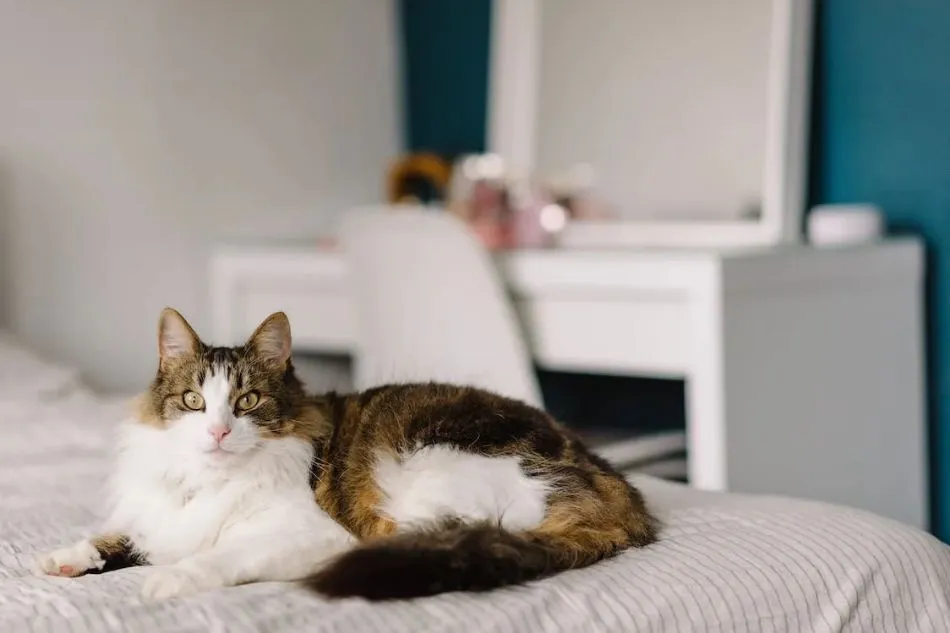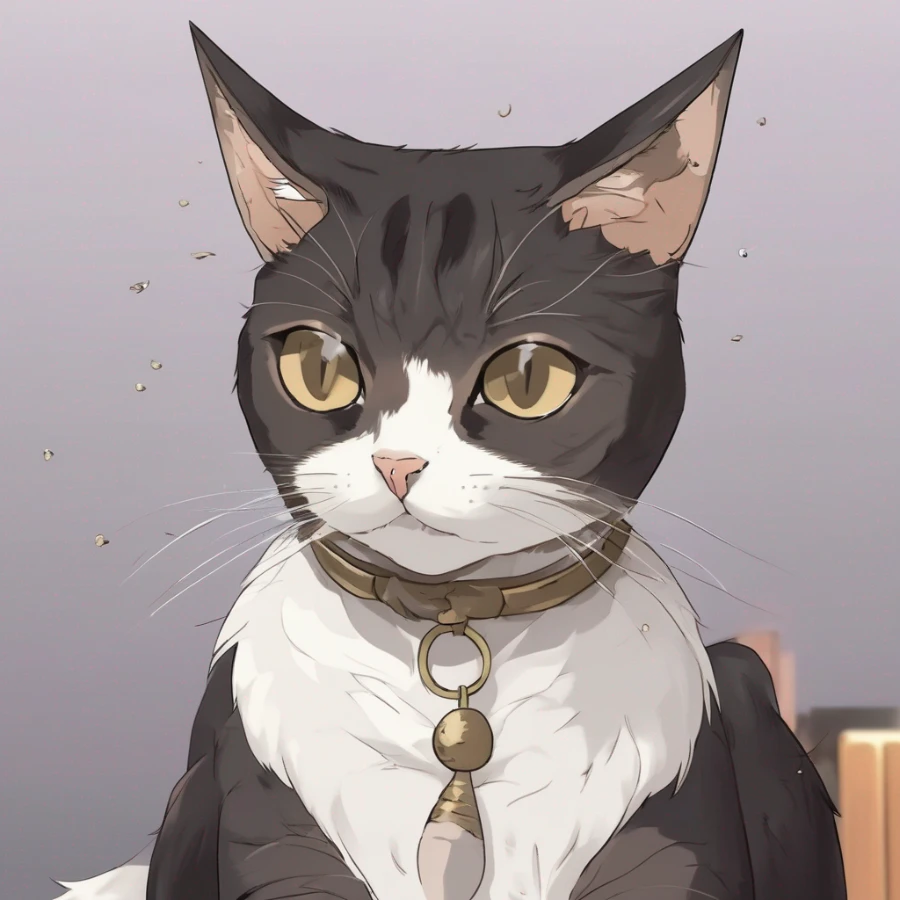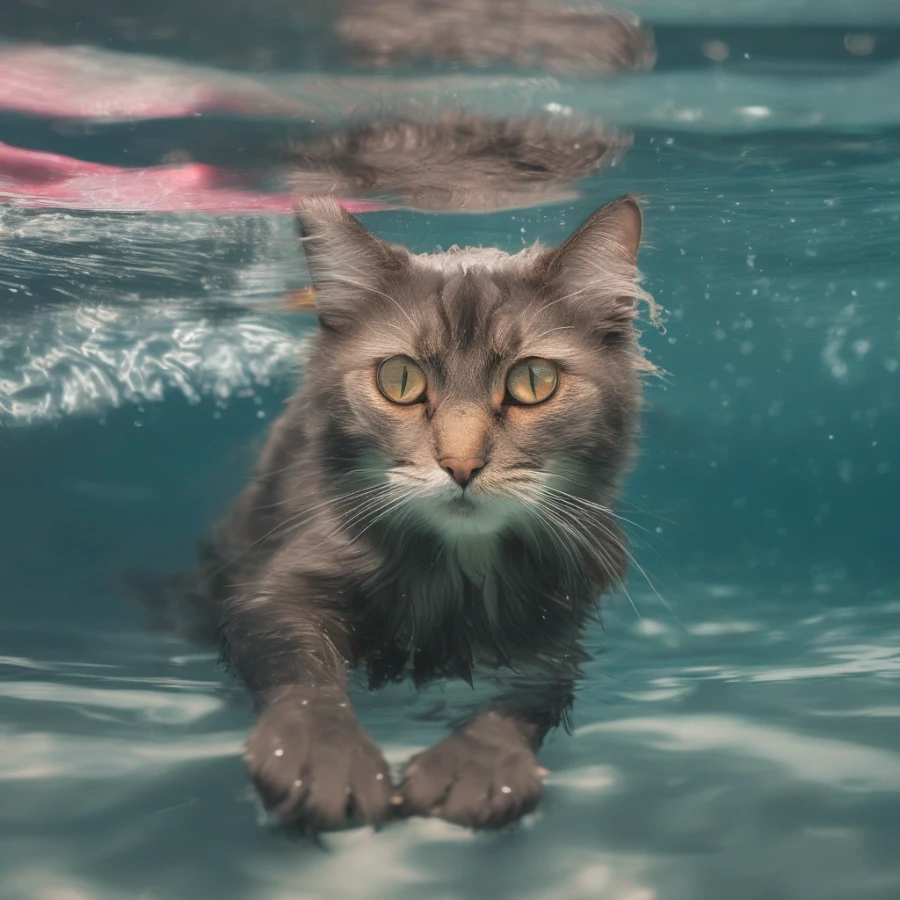Do Cats Enjoy Having Their Tails Touched?

Published by: Tatsiana Korshik
Time to Read: 6 Min

Do Cats Enjoy Having Their Tails Touched?
Whether or not cats enjoy having their tails touched can vary from cat to cat. While some cats may enjoy gentle tail strokes and see it as a form of affection, others may find it uncomfortable or even painful. It's important to observe your cat's body language and reactions to determine if they enjoy tail touching. Signs of enjoyment may include purring, relaxed body posture, and leaning into the touch. On the other hand, signs of discomfort or dislike may include hissing, swatting, or attempting to move away. Always respect your cat's boundaries and preferences when it comes to tail touching or any form of physical interaction.How to Groom a Cat’s Tail?
Grooming a cat's tail is an important part of their overall grooming routine. Here are some steps to help you groom your cat's tail:Prepare the grooming area: Find a quiet and comfortable space where you and your cat can both relax during the grooming session. Have all the necessary grooming tools, such as a cat brush or comb, within reach.
Start with gentle strokes: Begin by gently stroking your cat's tail to help them relax and get accustomed to the grooming process. Pay attention to their body language and adjust your approach accordingly.
Brush or comb the tail: Use a suitable brush or comb to gently remove any tangles or mats from your cat's tail. Start from the base of the tail and work your way towards the tip, using gentle, downward strokes. Be careful not to pull or tug on the fur, as it may cause discomfort.
Check for any issues: While grooming, keep an eye out for any signs of skin irritations, wounds, or parasites on your cat's tail. If you notice anything unusual, consult your veterinarian for guidance.
Trim the fur (if necessary): Some cats may have long fur on their tail that requires occasional trimming. If your cat's tail fur is excessively long and prone to matting, you can carefully trim it using grooming scissors. Be cautious not to cut too close to the skin and avoid any sudden movements that may startle your cat.
End on a positive note: After grooming, reward your cat with praise, treats, or a play session to create positive associations with the grooming experience. This will help your cat feel more comfortable during future grooming sessions.
Remember, grooming should be a calm and positive experience for both you and your cat. If your cat becomes stressed or agitated during the grooming process, it's best to stop and try again later or seek professional help from a groomer.
What Is The Function Of A Cat’s Tail?
A cat's tail serves several important functions:Balance and Stability: The tail acts as a counterbalance, helping cats maintain their balance while jumping, climbing, or walking on narrow surfaces. It enables them to make precise movements and land safely.
Communication: Cats use their tails as a means of communication. Different tail positions and movements convey various messages. For example, a relaxed and upright tail usually indicates a friendly and content cat, while a puffed-up tail indicates fear or aggression. A swishing tail can indicate annoyance or excitement.
Body Temperature Regulation: Cats use their tails to regulate body temperature. In hot weather, they may hold their tails up to dissipate heat and keep cool. Conversely, in cold weather, they may wrap their tails around their bodies to conserve body heat.
Expression of Emotions: Cats often express their emotions through their tails. A happy cat may have an erect and gently moving tail, while an anxious or agitated cat may have a puffed-up tail or a tail held tightly against their body.
Hunting and Balance Aid: When cats are hunting, their tails can serve as a tool for maintaining balance and coordinating movements. It helps them make precise turns, quick maneuvers, and changes in direction while chasing prey.
Visual Signal: The tail is a prominent visual feature of a cat and can be used to attract attention or signal their presence to other animals.
Overall, a cat's tail is a versatile and essential part of their body, serving functional, communicative, and expressive purposes.
Do Cats Have Feeling In Their Tails?
Yes, cats have nerves in their tails, which means they can feel sensations in this part of their body. The tail is equipped with sensory receptors that can detect touch, pressure, and temperature. Cats can also feel pain if their tail is injured or handled in a way that causes discomfort. The tail is an important sensory organ for cats, and they use it to gather information about their environment, communicate, and express their emotionsHow to Determine If Your Cat Likes or Dislikes Tail Touching?
To determine if your cat likes or dislikes tail touching, it's important to observe their body language and reactions. Here are some signs to look for:Positive Signs:
Relaxed Body: A cat that enjoys tail touching will generally have a relaxed body posture. They may hold their tail up and slightly curved.
Gentle Response: If you touch their tail gently, they may show signs of enjoyment, such as purring, leaning into the touch, or even wagging their tail gently.
Seeking More: If your cat leans in for more tail strokes or remains relaxed and content while you touch their tail, it's a positive indication that they enjoy it.
Negative Signs:
Tail Twitching: If your cat's tail starts twitching or flicking rapidly while you touch it, it may be a sign of irritation or discomfort.
Tail Tucking: If your cat tucks their tail tightly against their body or moves it away when you try to touch it, it suggests that they are not comfortable with tail touching.
Aggression or Fear: Cats may exhibit aggressive behavior, such as hissing, growling, or swatting, if they strongly dislike tail touching. They may also show signs of fear or anxiety, such as flattened ears, dilated pupils, or attempting to flee.
Remember, each cat is unique, and their preferences may vary. Some cats may enjoy tail touching while others may not. Always approach your cat with gentleness and respect their boundaries. If your cat consistently shows signs of discomfort or dislikes tail touching, it's best to avoid it to ensure their comfort and well-being. Do Cats Control Their Tails?
Yes, cats have some control over their tails and can move them voluntarily. The tail is an extension of the cat's spine, composed of multiple vertebrae held together by muscles, tendons, and ligaments. Cats have the ability to move their tails in various ways to communicate, express emotions, and maintain balance.
Here are a few ways cats can control their tails:
Tail Position: Cats can raise or lower their tails to different positions. A high, erect tail often indicates a confident or happy cat, while a low or tucked tail can suggest fear or submission.
Tail Movement: Cats can move their tails in different patterns and speeds. They may swish their tails side to side when they are alert or focused, flick their tails rapidly when agitated or annoyed, or gently wag their tails when content.
Tail Fluffing: Cats can make their tails appear larger by fluffing them up. They do this as a defensive display to appear more intimidating when they feel threatened or agitated.
Tail Wrapping: Cats can wrap their tails around themselves, especially when resting or sleeping. This behavior helps them conserve body heat and feel more secure.
While cats have some control over their tails, it's important to note that tail movements can also be involuntary reflexes or responses to stimuli. Understanding your cat's tail language and paying attention to other body cues will help you interpret their emotions and intentions more accurately.
Can Cats Live Without Tails?
Yes, cats can live without tails. While the tail is a natural and important part of a cat's anatomy, it is not essential for their survival. Cats use their tails for various purposes, including balance, communication, and body temperature regulation. However, if a cat's tail is injured or amputated due to medical reasons, they can adapt and live a normal life without it.Cats without tails may need to make some adjustments to maintain their balance, especially when jumping or navigating narrow spaces. However, they often compensate by using other parts of their bodies, such as their legs and body movements, to maintain stability.
It's important to note that tail amputation should only be performed by a qualified veterinarian and should only be done when necessary for the cat's health and well-being. In cases where a cat loses its tail due to injury or surgery, proper care and monitoring are essential during the recovery process to ensure the cat's comfort and adjustment to the changes.



